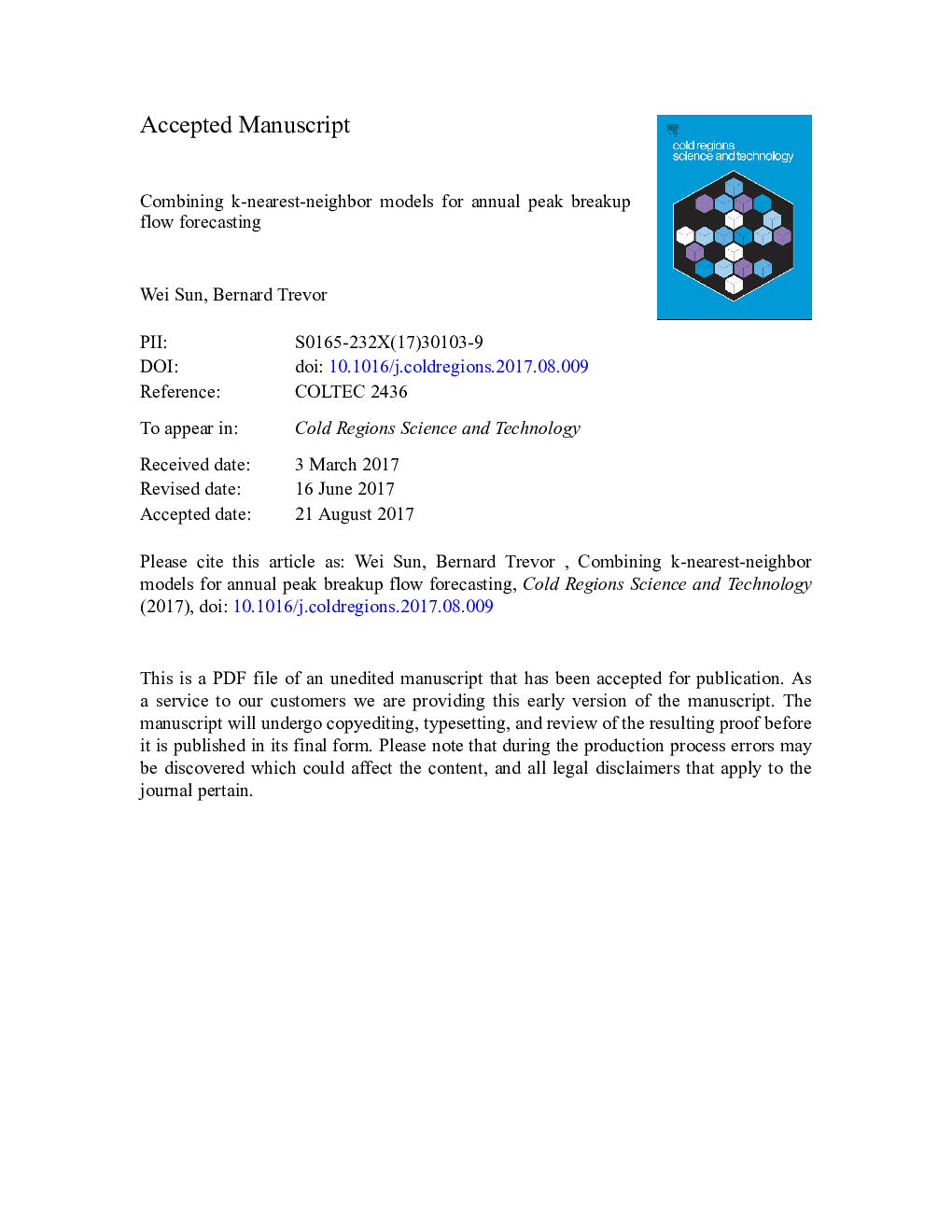| Article ID | Journal | Published Year | Pages | File Type |
|---|---|---|---|---|
| 5779380 | Cold Regions Science and Technology | 2017 | 45 Pages |
Abstract
In practice, water resources managers and river forecasters often face the problem in identifying from the historical record years that show a similar pattern of weather and river conditions as the current year is following. The k-nearest neighbor (kNN) algorithm is such a type of machine learning method, where no assumptions on the dataset distributions are made, but a minimal (no explicit) training stage is required. This is especially useful in river ice forecasting where weather and river condition indicators often do not obey the typical theoretical assumptions; the complex river ice mechanisms are difficult to directly quantify. However, few applications of kNN to river ice studies have been reported. Since the predictive performance of a single kNN is limited, we combine multiple KNN models (first-level) based on different numbers of inputs which are linearly or nonlinearly correlated to annual peak breakup flow (APBF); we use both simple average methods and kNN models as combining models (second-level), and we apply the kNN-based combination models to APBF forecasting of the Smoky River at Watino, Canada. The Mahalanobis distance is chosen in kNN since neither the standardization of input variables nor the assignments of weights to variables are required. The historical breakup data at this site for the past 33Â years (1980 to 2012) were collected to facilitate the performance comparison of models. The results show that both training and validation performances of the combining models are substantially better than those of member models. The proposed framework can be potentially applied to various forecasting problems in water resources management practice.
Related Topics
Physical Sciences and Engineering
Earth and Planetary Sciences
Earth and Planetary Sciences (General)
Authors
Wei Sun, Bernard Trevor,
